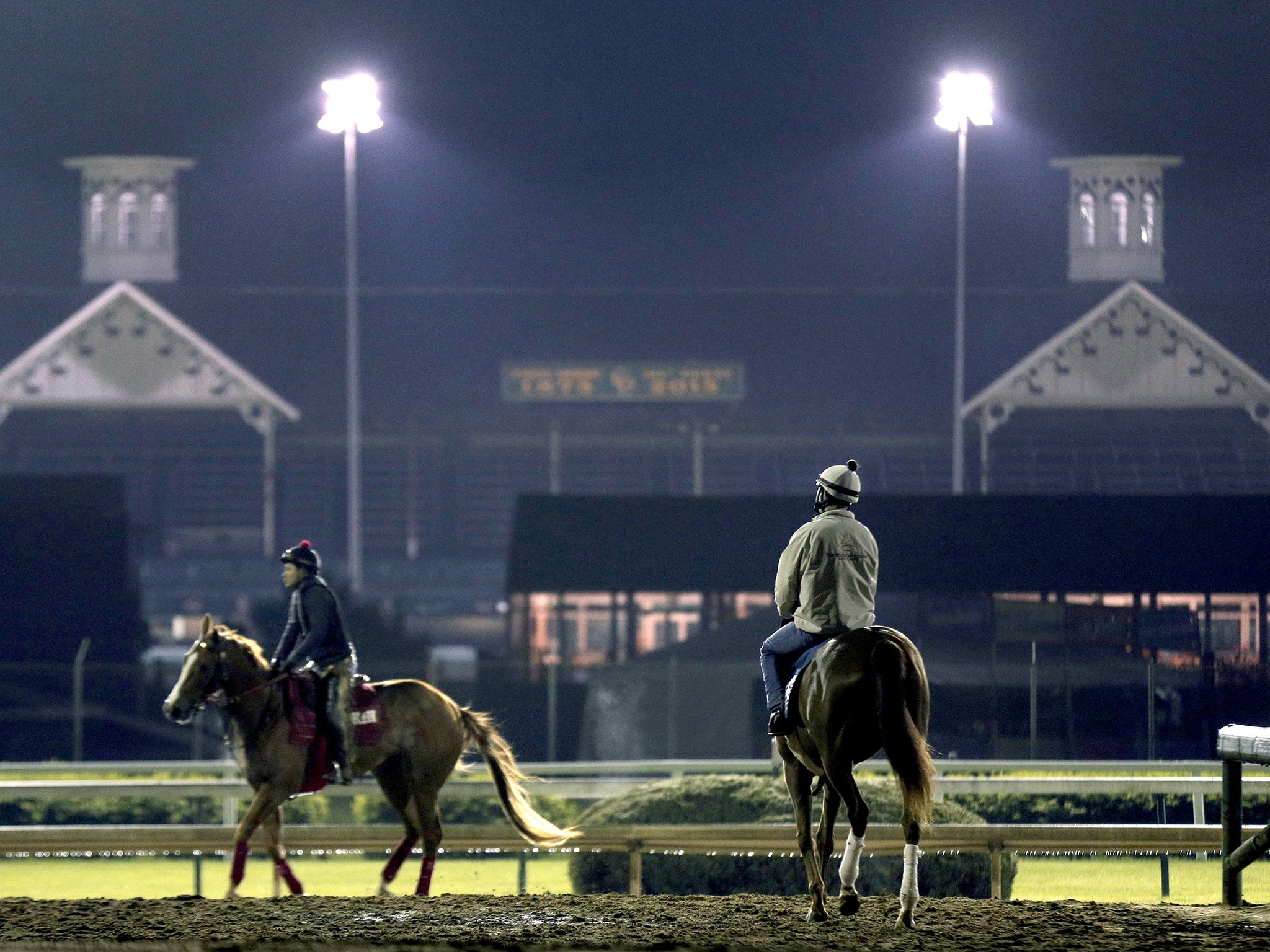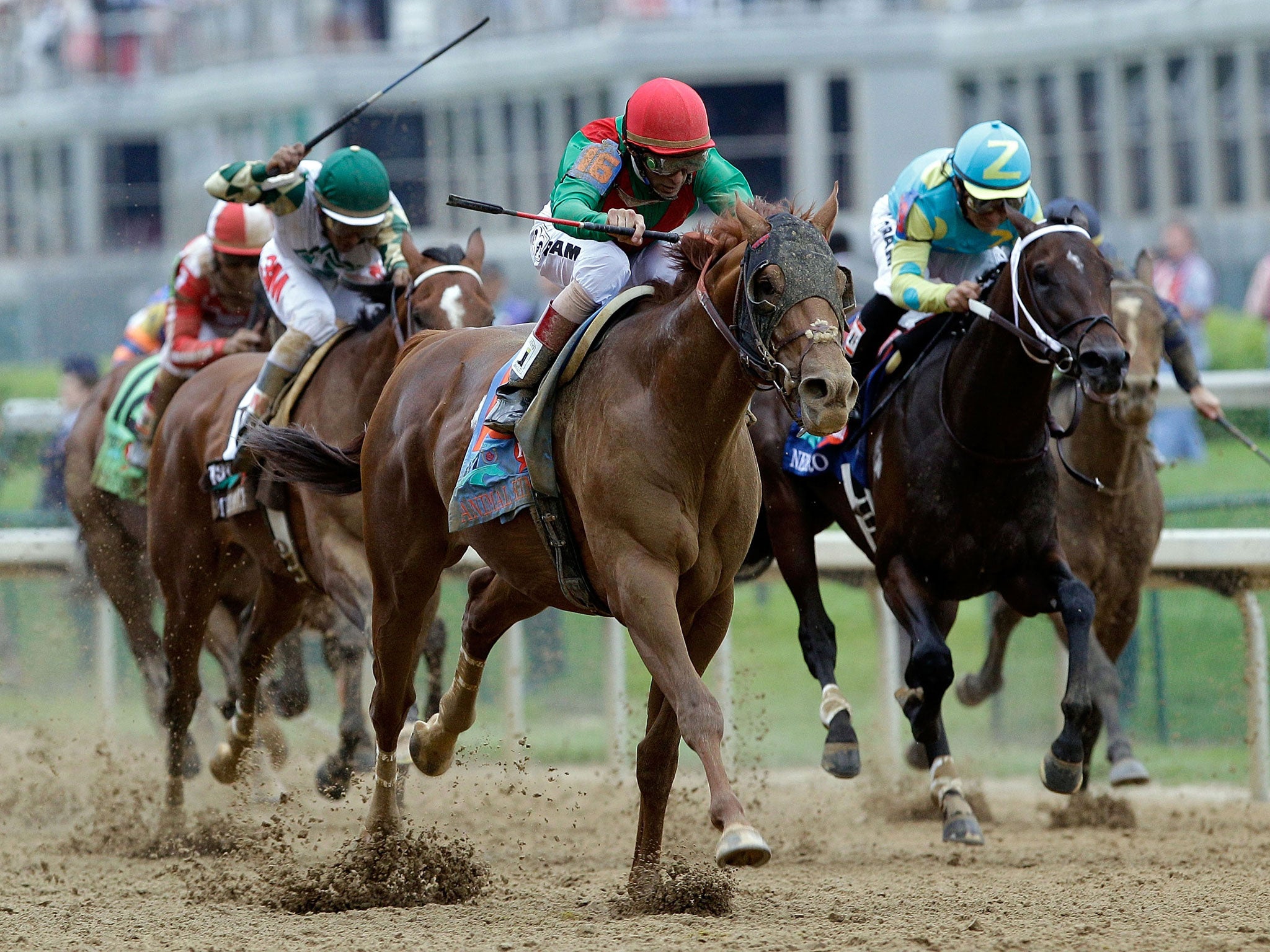Derby day luck can breed a fortune in Kentucky
Despite a decline in American horse racing, tomorrow’s meeting might be the most lucrative sporting event on Earth

The glory days of American horse racing might be in the past, but on the first Saturday in May the country still stops whatever it is doing for two minutes to watch the Kentucky Derby. Tomorrow, millions of dollars will be gambled (legally and illegally) and Bourbon will be drunk in vast quantities. It’s “decadent and depraved” according to the Fear and Loathing in Las Vegas author Hunter S Thompson, who grew up a stone’s throw from the track and who knew a thing or two about decadence and depravity.
The Kentucky Derby has been a permanent fixture in the American sporting calendar since 1875, making it the world’s longest continuously running annual sporting event. Based on how long it actually lasts, it could also be the most lucrative.
Not just lucrative for the winning owner, trainer and jockey, but also for the city of Louisville, home of Churchill Downs where the “Race for the Roses” is run. The race brings in around $350m (£225m) via spending at the track and the two-week festival that goes with it.
Claims about the financial benefit of sporting events are regularly disputed by economists. Not only does much of the benefit go to corporations that have little to the do with the city in question, but there is also no formal agreement on how these benefits should be calculated.

Barry Kornstein, of the University of Louisville’s Urban Studies Center, says most studies of sporting impacts are flawed. “Dollars that are spent by locals would have been spent anyway. It’s only dollars from out of town that are drawn in by an event that should be counted.”
Of course, bullish estimates on economic gains are an important part of selling the idea of hosting an event to a city’s taxpaying population.
However, Louisville’s benefits are arguably more genuine than many other city’s. Churchill Downs Inc, which owns and operates the track, is a local company and many hotels are locally owned, so much of the Derby’s impact remains in the city. Around 300,000 people will pass through the turnstiles this week, often paying thousands of dollars for box seats with a clear, if slightly blurred, view of the finish line.
Horse racing is not the sport for the masses it once was in the US, but the Derby holds its own as a financial boon when compared with other sports events. Glendale, Arizona hosted the 2013 Super Bowl, the annual final game of the professional gridiron season, claiming around $500m as the total financial impact at the time. Hotel rooms, food and beer, souvenirs – sports fans come to spend money no matter what they have come to watch. The US Open tennis tournament, held every August at Flushing Meadow in New York, claims to generate more than $700m.
But on a minute-by-minute basis? The interminable Super Bowl lasts something like four hours and moves from city to city (like the US Open golf tournament and the baseball World Series). Golf takes four days to find a winner, and the tennis and baseball are two-week marathons. In 1973 Secretariat won the Derby in under two minutes.
The Kentucky Derby Festival features more than 70 events including the largest public display of fireworks in the US (“Thunder Over Louisville”, watched by an estimated 650,000 people from the banks of the Ohio River), concerts and balloon races. Louisville makes the most of its annual day in the sun, even closing schools on Friday when the Kentucky Oaks is run; too many teachers used to bunk off and head to the track.
“It’s a reason to party for people who are sick of winter, and this year people got very sick of winter,” says Mike Berry, chief executive of the Kentucky Derby Festival. “The community and local businesses are firmly entrenched in the festival. It brings people to the city for longer than the racing, fills hotels for longer. For every dollar we spend on the festival, about $22 are spent in the city.”
Despite the enduring popularity of the Kentucky Derby, American horse racing has more than its fair share of problems. In contrast to racing in Britain, where the sport remains the second-most attended after football, American racing has largely failed to attract new fans outside its strongholds in Kentucky, New York, Florida and California. It remains lucrative for owners and trainers, but largely thanks to the large number of “racinos” that have sprung up across the country – casinos granted licences on condition that they plough some of their slot machine takings into racing purses.
The Kentucky Derby (and to a lesser extent the Preakness and Belmont Stakes, the second and third legs of the American “triple crown” of racing) is an outlier in an industry struggling for relevance against modern sporting competition.
Yet despite its fame, prestige and $2m purse, the Derby remains an event that only garners moderate interest among the most hardened of horse racing fans in the UK. British and Irish horses rarely make the trek across the Atlantic to participate.
Candice Curtis, of the website Horseracingnation, explains: “American racing is very different in style to European racing. Here we race almost exclusively on dirt over shorter distances and so our horses tend to start fast. Also, almost every American horse is given Lasix [a drug that prevents bleeding in the lungs and is widely considered a performance enhancer and banned in European racing]. Horses that have not been exposed to Lasix are often at a disadvantage to those that have.”
There has only been one British-bred winner of the Kentucky Derby, a horse called Omar Khayyam that was sold to an American trainer as a yearling and went on to win the 1917 race. This year Mubtaahij, a horse bred in Dubai and trained by the South African Mike de Kock, is widely considered one of the main threats to the American favourite Carpe Diem. Mubtaahij will also be the first horse to compete in the Derby for a decade while not on Lasix. That alone makes it worthy of being a sentimental favourite.
Regardless of the general decline of racing and the lack of British and Irish interest, the Kentucky Derby remains one of the great sporting and money-making events in the US. Long may it continue.
Join our commenting forum
Join thought-provoking conversations, follow other Independent readers and see their replies
Comments